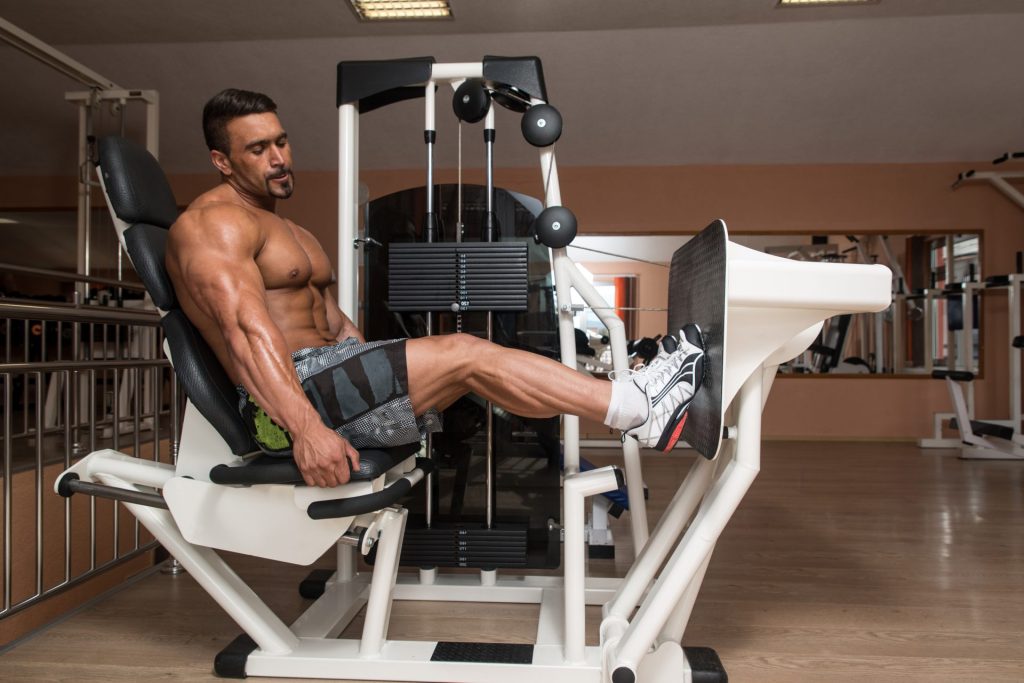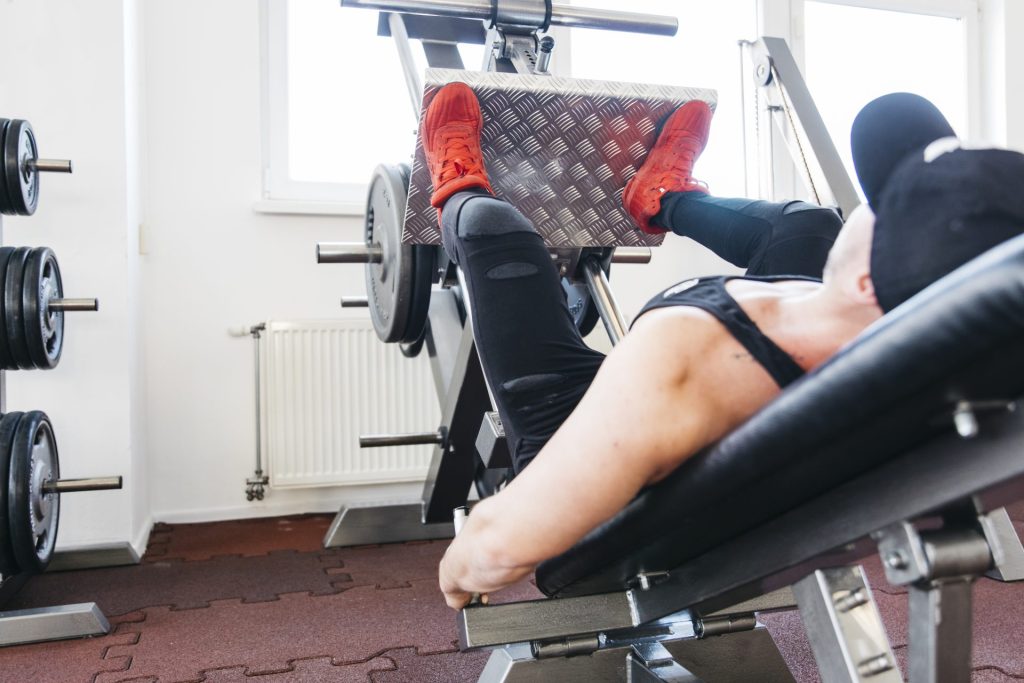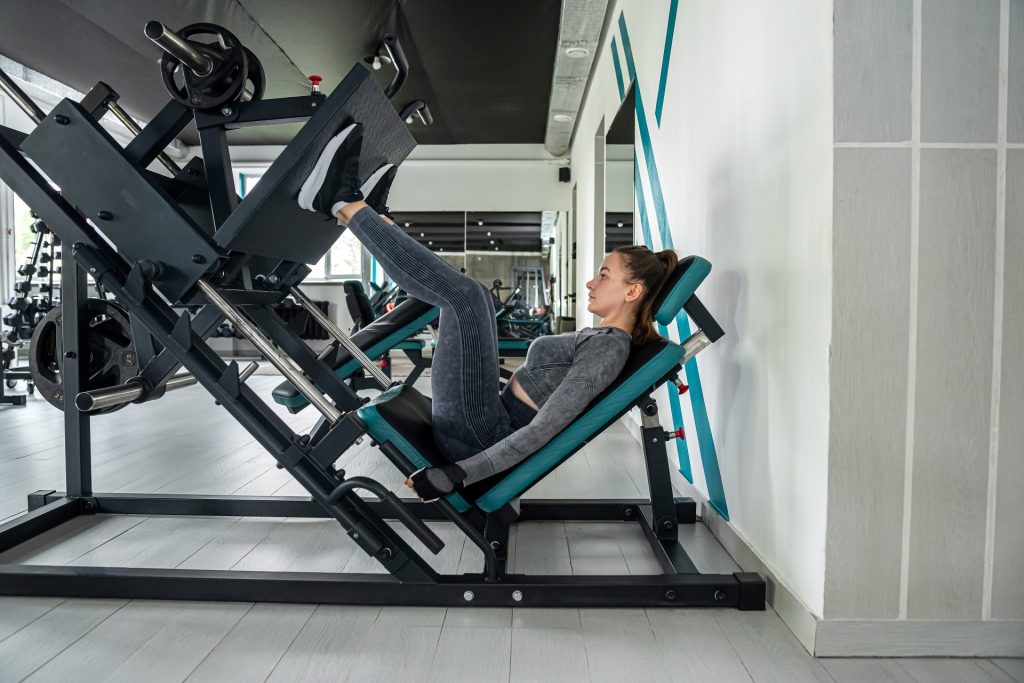Foot placement on the leg press machine is a key factor to consider when developing an effective leg and glute workout. Different foot placements on the leg press machine can target different muscles in the legs and glutes, which can help build strength, mass, and definition.
Depending on your end goal, you should adjust your foot placement accordingly while using the leg press machine to reap the most benefits. It’s important to understand how different foot placements will impact the load placed on your muscles and what muscles are being targeted with each movement.
Knowing this information can help you get more out of your workout by targeting specific muscle groups depending on what type of results you wish to achieve. In this blog post, we’ll discuss different aspects of foot placement on the leg press machine such as how different positions affect muscle recruitment, which muscles are targeted in certain positions, and other valuable tips for getting the best workouts possible with this piece of equipment.
Contents
What Muscles Does Leg Press Work?
The Quadriceps
The quadriceps is the group of muscles located on the front of your thighs.
These muscles include the rectus femoris, vastus medialis, vastus lateralis, and vastus intermedius.
The leg press works these muscles by allowing you to push against resistance as you extend your legs forward. This motion helps to strengthen and tone your quads.
The Glutes
The gluteal muscles make up the buttock region and include the gluteus maximus, gluteus medius, and gluteus minimus.
When you do a leg press properly, these muscles get activated as they help stabilize your body so that you can exert maximum force when pushing against the weight plate.
Hamstrings
The hamstrings are located on the back of your thigh and include three separate muscles—the biceps femoris, semitendinosus, and semimembranosus.
These muscles are worked during leg presses as they help to control knee extension and hip flexion during each rep.
Calves
Your calves consist of two major muscle groups—the gastrocnemius and soleus—both of which will be activated during leg presses if done correctly.
As you push against the weight plate with your feet planted firmly on the platform, your calves will be working hard to keep you balanced while also helping to propel you forward with each rep.
What You Should Know About Different Types of Leg Press Machines
The Horizontal Leg Press Machine
This is one of the most common variations of the leg press machine and consists of a large platform that is typically elevated off the ground at about waist level. The user lies on their back with their feet placed on top of the platform. The weight is then loaded onto a bar attached to the machine which rests on the user’s thighs.
To complete the exercise, users push against the weight with their legs until their legs are fully extended in front of them and then return to their starting position. This type of leg press is ideal for those who are just beginning strength training as it allows for easy adjustments to accommodate different body types and levels of strength.
It also allows users to modify weight and create smooth, controlled movements for greater control over their exercise routine.
The 45-Degree Leg Press Machine
This type of leg press machine looks similar to its horizontal counterpart but instead has a 45-degree angle between where your feet rest and where your body lies during use. This type requires more balance than its horizontal counterpart as it does not allow for any adjustments or modifications while performing exercises due to its fixed design.
However, because users must stabilize themselves more during use, this type provides an additional challenge that can help increase muscle definition and overall strength.
Additionally, it can work deeper muscles in your legs such as your glutes and hips due to its increased range of motion compared with horizontal machines.
The Seated Leg Press Machine
This variation consists of a chairlike seat that is usually adjustable so that users can customize their fit according to their height and size. There is also typically an adjustable footplate that allows users to adjust the angle at which they push against the weight stack (typically upwards).
This type of machine offers more support than either horizontal or 45-degree machines as well as greater control over body positioning during exercise routines; however, because users are seated rather than lying down during use, there may be less strain on certain muscles depending on what position they choose for themselves while performing exercises on this type of machine.
Additionally, due to its smaller size compared with other types, it may be more suitable for those who have limited space available in their home gym setup or a limited budget for purchasing equipment.
All You Need To Know About Foot Placement On The Leg Press Machine
One of the most important factors when using a leg press machine is foot placement. Where you place your feet on the platform can make a big difference in terms of which muscles are recruited, how well you target certain muscle groups, and how effective your workout will be overall.
Wide Foot Placement
Wide foot placement requires you to place your feet wider than shoulder-width apart at an angle of 45° on either side of your hips. This position targets more glute and hamstring muscles than other positions.
It also puts less stress on the lower back than in other positions. This is one of the most popular positions for performing leg press exercises, as it allows you to use heavier weights than other placements.
However, it does put a lot of stress on your knees, so it should be avoided if you have any previous knee issues or injuries.
Narrow Foot Placement
The narrow Foot position activates more quadriceps muscles and fewer hamstrings than other positions, making it better for targeting those areas specifically. It also puts slightly more stress on the lower back than in some other positions.
This position requires you to place your feet directly above your hips with only a slight gap between them (about 2-3 inches). It puts less strain on your knees than wide foot placement, making it ideal for those who have knee problems or previous injuries.
Additionally, because this position requires you to use less weight, it places more emphasis on muscle control and stabilization which can help improve overall balance and coordination.
Single Leg Placement
This position requires you to use one leg at a time during the exercise instead of two legs simultaneously like in other placements. It’s great for building single-leg strength and stability, but because it also requires you to use much lighter weights than other placements, it may not be suitable for those looking to build mass and size in their legs quickly.
Vertical Foot Placement
This position requires you to place your feet directly above your hips with no gap between them whatsoever (i.e., toes touching). This provides an additional stability challenge since there’s less surface area available for support compared to other placements; however, it also makes it easier to target specific muscle groups in the legs due to its increased range of motion (ROM).
As such, this position is best suited for those looking to increase their range of motion or focus on specific muscle groups within their legs (e.g., quads, and hamstrings).
Tips For Best Results With Your Leg Press Workouts
When executing any type of leg press workout, there are certain tips that can help ensure that you get the best possible results from each exercise session:
- Make sure that your feet are firmly planted against the platform throughout each rep so that they don’t shift or slide during execution.
- Don’t lock out your knees at any time during execution as this can put unnecessary strain on them (and potentially cause injury).
- Keep your upper body straight throughout each rep so that all of the focus remains on contracting and releasing your legs (not swinging or jerking around with momentum).
- Take slow and steady breaths while executing each rep so that you remain relaxed yet focused throughout each set or interval.
- Focus on keeping tension in both legs so that they are equally engaged throughout each rep (and not relying too heavily on one side over another).
Keeping these tips in mind will help ensure that every workout session yields maximum results with minimal risk of injury or discomfort!
Conclusion
To end this blog post, let us remember the importance of foot placement on leg press exercises. A proper stance will not only lead to better form and results but can also prevent injuries. To maintain correct foot placement, be sure to keep your feet flat and no wider than shoulder-width apart.
Also consider that the foot angle should remain in line with your lower body. This is especially important because the angle of the feet can affect how deeply you are able to press into the machine, which can add or detract from your workout performance.
Additionally, be sure to push evenly with both feet during each rep so as to ensure an even load is applied to both legs for a balanced workout. Remember that when it comes to any type of exercise, form is always key if you want to reach your desired results and stay safe while doing so!




